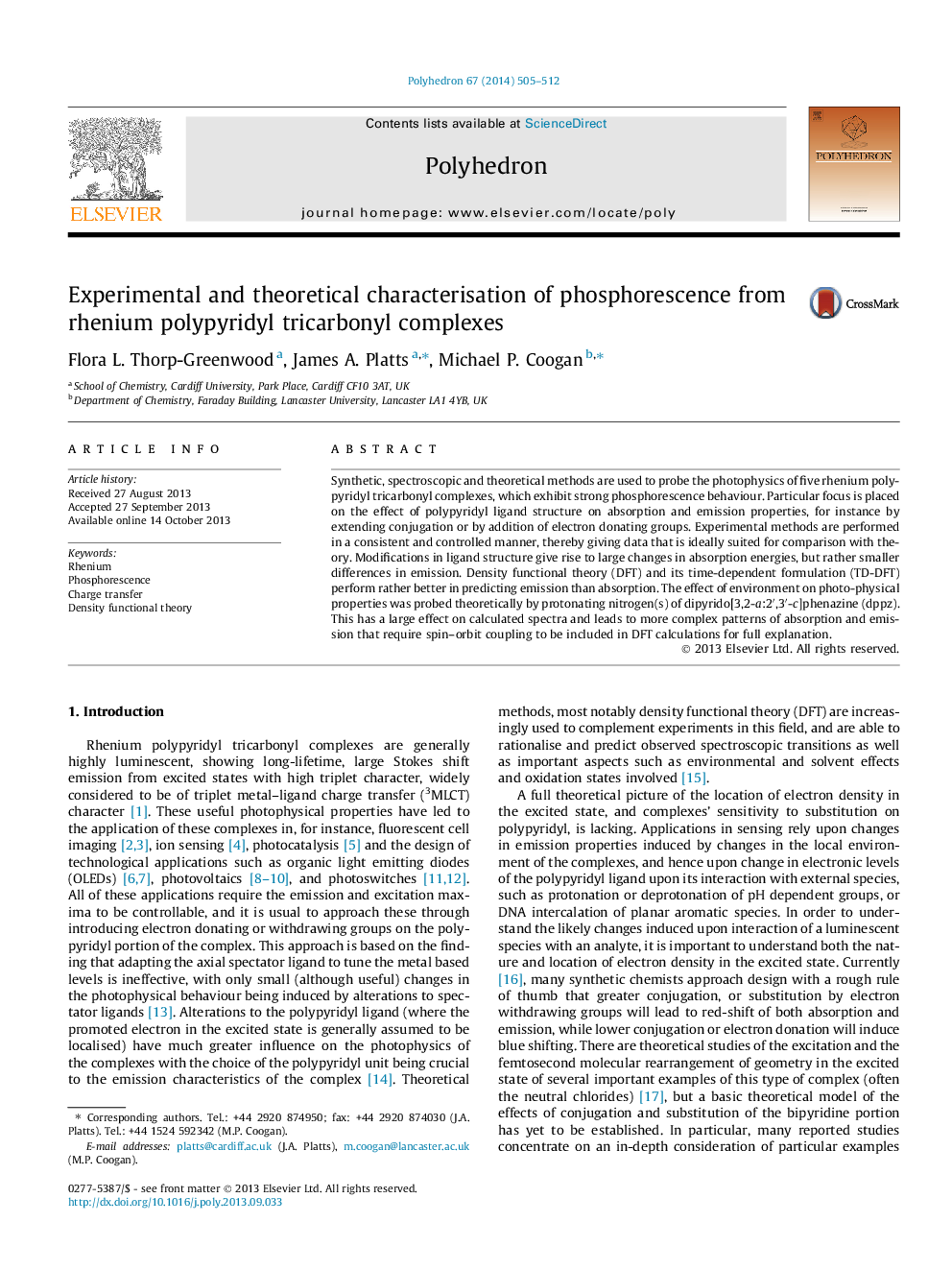| Article ID | Journal | Published Year | Pages | File Type |
|---|---|---|---|---|
| 1335509 | Polyhedron | 2014 | 8 Pages |
Synthetic, spectroscopic and theoretical methods are used to probe the photophysics of five rhenium polypyridyl tricarbonyl complexes, which exhibit strong phosphorescence behaviour. Particular focus is placed on the effect of polypyridyl ligand structure on absorption and emission properties, for instance by extending conjugation or by addition of electron donating groups. Experimental methods are performed in a consistent and controlled manner, thereby giving data that is ideally suited for comparison with theory. Modifications in ligand structure give rise to large changes in absorption energies, but rather smaller differences in emission. Density functional theory (DFT) and its time-dependent formulation (TD-DFT) perform rather better in predicting emission than absorption. The effect of environment on photo-physical properties was probed theoretically by protonating nitrogen(s) of dipyrido[3,2-a:2′,3′-c]phenazine (dppz). This has a large effect on calculated spectra and leads to more complex patterns of absorption and emission that require spin–orbit coupling to be included in DFT calculations for full explanation.
Graphical abstractSynthesis and spectroscopy, coupled with DFT calculations, are used to probe the effect of ligand structure on absorption and emission spectra of rhenium polypyridyl tricarbonyl complexes.Figure optionsDownload full-size imageDownload as PowerPoint slide
